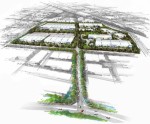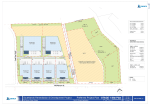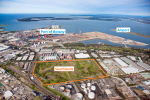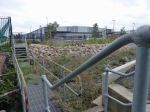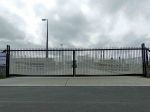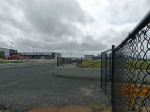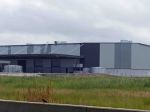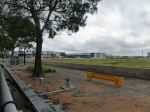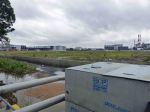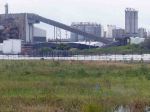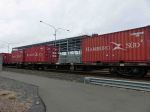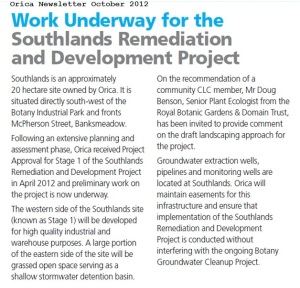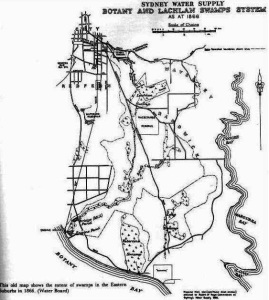At around 18ha this was the largest undeveloped package of land within the Ports SEPP. Orica purchased the site from APM (Australian Paper Mills, now Orora) in 1980. They continue to retain ownership of Lots 9, 10 and 11, with a large portion of the eastern side (Lot 9) being an open space area providing compensatory flood storage benefiting the local area. This area is landscaped in accordance with a plan developed with community input and approved by DPI and the City of Botany Bay Council. The Western site (Lots 1-6) have been developed by Goodman and the remaining lots (7,8,12) on the eastern border have been sold.
Lots 10 and 11 house the infrastructure (i.e. groundwater monitoring and extraction wells and associated pipework) required for Orica’s ongoing Botany Groundwater Cleanup Project. Southlands_Site_History
Photos taken 28th March 2016 (10 years since community consultation commenced on this project) Latest Update from Orica Southlands Fact Sheet_April 2015_rev 1
______________________________________________________________
As part of consent conditions Orica have also rehabilitated around 5ha of the Southlands site to provide habitat for native species. There are frog ponds for_GGBF Green and Golden Bell Frog and other species such as the rare and threatened Grey Headed Flying Fox may be encouraged to roost after indigenous tree species have established.
Final Plan released 20th December 2013 Orica Southlands Final Approval 2013

At a site meeting on 14th August, 2012: L-R Doug Benson; Steve Corish(Orica); Jeff Lord (DBL Property), Lucy Archer (Orica); Graeme Richardson(Orica); Lynda Newnam, Jocelyn Ramsay (JRLA)
In Taken for Granted (Kangaroo Press, Sydney 1990). Benson and Howell describe the area surrounding Southlands as containing some of the best examples of Eastern Suburbs Banksia Scrub, a Rare and Threatened Community, and wetlands of Cauarina glauca and Eucalyptus robusta. Note Southlands here is Veteran Swamps.
In 1850 Frederick Mackie walked the area and recorded his observations: ―The road lies over sand hills covered with small scrub and various flowers. The sand in many places has almost the whiteness of snow and so little mixture of earth is there in it that it would doubtless be entirely destitute of vegetation but for the moisture of it; water is found about 2 ft. below the flat surface. In the ―Illustrated Guide to Sydney (1882), the writer lamented the changes: ―Those who remember the road to Botany in years gone by are not surprised at the name given by the first discoverer(James Cook)….We know most of the wild flower regions of the colony, but none to compare in variety and richness with Botany, as it was.. ―In contrast to the sandy or peaty nature of the other swamp systems, Long Swamp near Malabar and Veterans Swamp at Banksmeadow appear to have been more fertile and were developed for market gardens in the nineteenth century; some of these market gardens still exist. The vegetation here was probably low forest of the paperbarks Melaleuca ericifolia and Melaleuca linariifolia and Swamp Mahogany, Eucalyptus robusta, with a grassy and herbaceous understorey.

